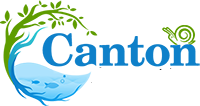Discover the top live plants that will enhance the beauty and health of your aquarium.
Benefits of Live Plants in Your Aquarium

Live freshwater aquarium plants provide numerous benefits to your aquarium ecosystem. Firstly, they help to oxygenate the water by absorbing carbon dioxide and releasing oxygen through the process of photosynthesis. This is essential for the well-being of your fish and other aquatic creatures.
Additionally, live plants create a more natural and visually appealing environment for your aquarium. They add color, texture, and depth to the tank, making it more visually interesting and resembling the natural habitats of fish.
Live plants for an aquarium also play a crucial role in maintaining water quality. They help to absorb excess nutrients, such as nitrates, that can be harmful to fish if levels become too high. By doing so, they contribute to a healthier and more balanced ecosystem.
Furthermore, live plants provide shelter and hiding places for fish, particularly for shy or territorial species. They offer protection and reduce stress levels for your aquatic pets, promoting their overall well-being.
Overall, incorporating live plants into your aquarium not only enhances its aesthetics but also contributes to the overall health and happiness of your aquatic inhabitants.
Choosing the Right Live Plants for Your Aquarium
When selecting live aquarium plants for your fish tank, it is important to consider several factors. Firstly, you need to assess the lighting conditions in your tank. Some plants require high-intensity lighting, while others can thrive in low light conditions.
Next, consider the size of your aquarium and the space available for plants. Some plants, such as Amazon swords or Vallisneria, can grow quite large and may overpower smaller tanks. On the other hand, smaller plants like Anubias or Java fern are suitable for nano or small aquariums.
Another aspect to consider is the water parameters required by the plants. Some plants prefer soft water, while others thrive in harder water. It is important to research the specific needs of each plant to ensure compatibility with your aquarium.
Lastly, consider the growth rate of the plants. Some plants, like hornwort or water sprite, grow rapidly and may require regular pruning to prevent them from overtaking the tank. Other plants, such as Java moss or Anubias, have slower growth rates and are easier to maintain.
By considering these factors and researching the specific requirements of different plants, you can choose the right live plants that will thrive in your aquarium and complement the overall aesthetic.
Low Light Aquarium Plants
Low light freshwater aquarium plants are ideal for tanks with limited or low-intensity lighting. These plants have adapted to thrive in shaded areas and require less light to undergo photosynthesis.
Some popular low light aquarium plants include Java moss, Anubias, Java fern, and Cryptocoryne. These plants have broad leaves that can efficiently absorb available light and convert it into energy.
Low light aquarium plants are relatively easy to care for and are suitable for beginners or aquarium enthusiasts who prefer a low-maintenance setup. They can add a touch of greenery and natural beauty to your tank, even in low light conditions.
Foreground Aquarium Plants
Foreground aquarium plants are typically placed in the front or foreground of the tank, closest to the viewer. These plants are usually shorter in height and create a visually appealing foreground that adds depth and perspective to the aquarium.
Popular foreground aquarium plants include dwarf hairgrass, Marsilea minuta, and Eleocharis parvula. These plants have a carpet-like growth habit and can create a lush green carpet effect in the foreground of your tank.
Foreground plants not only enhance the aesthetics of your aquarium but also provide hiding places for small fish and invertebrates. They create a natural habitat and can contribute to the overall well-being of your aquatic pets.
When planting foreground aquarium plants, it is important to ensure proper substrate and lighting conditions. These plants typically require nutrient-rich substrates and moderate to high-intensity lighting for optimal growth.
Floating Aquarium Plants
Floating aquarium plants are plants that do not require planting in the substrate and instead float freely on the water surface. These plants can add a unique and natural touch to your aquarium, creating a beautiful display.
Some popular floating aquarium plants include water lettuce, duckweed, and Amazon frogbit. These plants have roots that hang down into the water, providing shelter and breeding grounds for fish and fry.
Floating plants also offer several benefits to your aquarium ecosystem. They provide shade and reduce the intensity of light, which can be beneficial for fish that prefer dimmer lighting conditions. Additionally, they help to absorb excess nutrients from the water, aiding in maintaining water quality and preventing algae growth.
It is important to note that floating plants can multiply rapidly, so regular maintenance may be required to prevent them from covering the entire surface of the tank. However, their unique beauty and the benefits they provide make them a popular choice for many aquarium enthusiasts. live aquarium plants





Leave a Comment